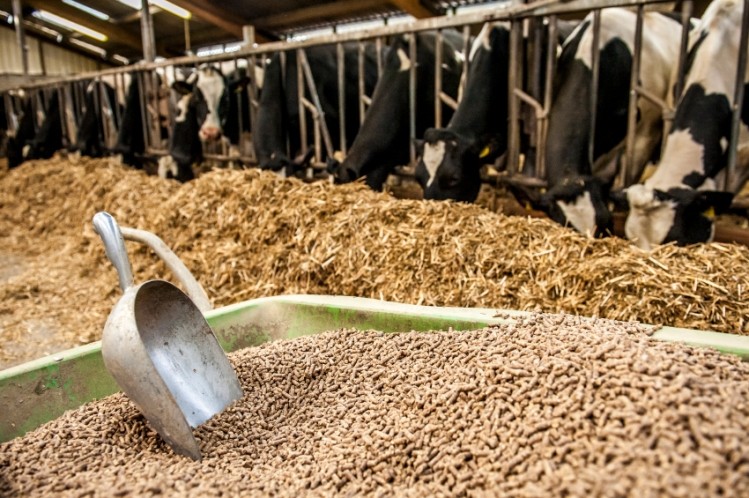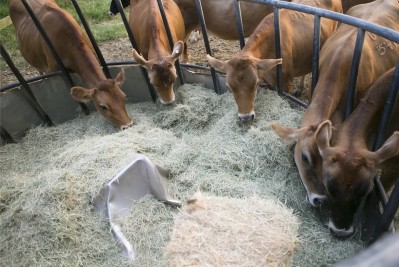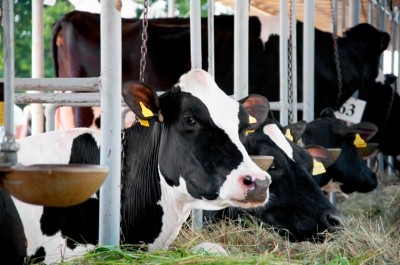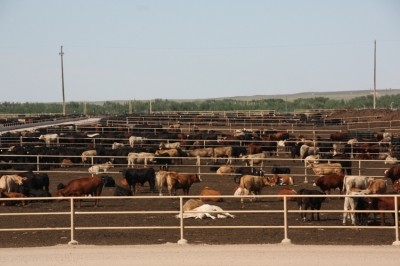Fescue grass offers silage replacement and boosts NDF digestibility

A team of researchers at the University of Wisconsin explored the effect of replacing corn or alfalfa silage with fescue hay on total-tract neutral detergent fiber (NDF) digestion and lactation.
The group reported their results in the Journal of Dairy Science.
The researchers are also working to check data used to populate a total-track NDF digestibility (TTNDFD) model. The tool was created using an in-vitro fermentation assay to determine the “proportion potentially digestible NDF and rate of digestion of NDF,” for fescue hay, they added.
“The objectives of the present study were to evaluate the effects of replacing either corn silage or alfalfa silage with tall fescue hay on lactation performance and to compare estimates of total-tract fiber digestibility as predicted by the TTNDFD model to in-vivo measurements,” the researchers said.
The group found that there were limited differences from replacing either corn silage (CS) or alfalfa silage (AS) with the fescue hay.
“Inclusion of tall fescue grass hay increased the total-tract NDF digestibility of the diet and has the potential to replace corn silage and alfalfa silage and maintain milk production if economically feasible based on current market prices,” they said.
Why fescue hay?
Dairy cattle dry matter intake (DMI) can be limited by rumen distension when NDF amounts are increased in a ration, especially if they have high energy requirements, said the researchers.
Grasses tend to have a higher NDF content than alfalfa or corn silage.
Corn and alfalfa silages have become increasingly common because they provide better dry matter (DM) digestibility, they said. Work done to improve those silages has boosted both DMI and milk production.
However, highly digestibility NDF in grasses also could offer the potential to increase DMI and milk production when added to a diet – or to maintain DMI and improve milk fat levels.
Modern strains of several grasses, including tall fescue grass, have been bred to offer better NDF digestibility, said the researchers. Agronomic practices like cutting grass earlier also can be used to increase NDF.
“Tall fescue grass can contain greater than 50% NDF and have an in vitro 48-h NDF digestibility of up to 75% of NDF (Brink et al., 2010; Pelletier et al., 2010),” they said.
Modern varieties of the plant also have been bred to be free of endophytes.
“Thus, incorporating a cool season, perennial grass, such as endophyte-free tall fescue, may allow for increased digestible NDF in a ration fed to lactating dairy cattle,” they noted.
Trial details
In the experiment, 24 primiparous and 40 multiparous cows were given one of four diets for 7 weeks, said the researchers. The treatments included a control diet of 33% alfalfa silage (AS) and 67% corn silage (CS); 60% tall fescue hay (TF) and 40%AS; 60%TF and 40% corn silage; and 33% TF and 67% corn silage.
Diets had similar levels of crude protein and starch but NDF and indigestible NDF (iNDF) altered, they said. Cows were fed a TMR at libitum, dry matter content was recorded weekly and as-fed ingredients proportions were rebalanced as needed.
Milk samples were collected weekly and analyzed for fat, true protein, lactose, milk urea nitrogen (MUN) concentrations and somatic cell count (SCC), they said.
Average daily yield for fat and protein also were determined.
Cattle intake and body weight were noted and a body condition score was given, said the researchers. Total-tract digestibility of DM, OM (organic matter)and NDF was established.
Fecal and ort samples also were collected during weeks 5 and 7, they said. Samples were analyzed for DM, OM, NDF, starch and iNDF.
Results
Fescue hay had the largest amount of NDF, followed by alfalfa and then corn, but alfalfa and fescue hay had elevated levels of indigestible NDF compared to the corn silage, said the researchers. “The rate of digestion of the potentially digestible NDF fraction was greatest for alfalfa silage (5.1%/h), lowest for corn silage (2.1%/h), and intermediate for tall fescue hay (2.9%/h), they added.
The result slightly altered initial findings from the test model which had placed fescue hay as having greater NDF content and NDF digestibility compared to both corn and alfalfa silages, they said.
Milk production was the same regardless of diet, and the average yield was 40.4kg/day, said the researchers. Similarly, fat yield, concentration, protein yield and concentration, BW and body condition score were similar among treatments.
“Replacing corn silage and alfalfa silage with tall fescue hay decreased DMI but maintained milk production and milk components compared with the control treatment in high-producing dairy cows, with no effect on rumination and eating time,” they said.
Dry matter intake was largest for the control diet at 24.5kg/day compared to 22.1kg/day for the 60%FT and 40%CS diet and tended to be larger than the 60%TF and 40%AS diet, they said.
“A treatment × week interaction for DMI is shown, where DMI was similar among all treatments for treatment wk 1, 2, 3, and 6, but was greater for the 33%AS 67%CS treatment compared with 33%TF 67%CS treatment in wk 4, 5, and 7, greater for the 33%AS 67%CS treatment compared with the 60%TF 40%CS treatment in wk 5 and 7, and greater for the 33%AS 67%CS treatment compared with the 60%TF 40%AS in wk 7,” said researchers.
Apparent total-tract DM digestibility tended to be higher for the 33%TF 67%CS diet than the 60%TF 40%CS diet, but was similar to the other diets, they said. The control diet appeared to have the greatest OM intake, while the 60%TF 40%AS diet had the largest intake of NDF and both the control and the 60%TF 40AS diets had the highest intake of iNDF.
Feed efficiency was similar among the different diets, they said. Milk SCC did not differ and MUN was larger forth the control diet than the 60%TF 40%AS diet.
Source: Journal of Dairy Science
Title: Effects of partial replacement of corn and alfalfa silage with tall fescue hay on total-tract digestibility and lactation performance in dairy cows
Authors: R.W. Bender, F. Lopes, D.E. Cook, D.K. Combs










